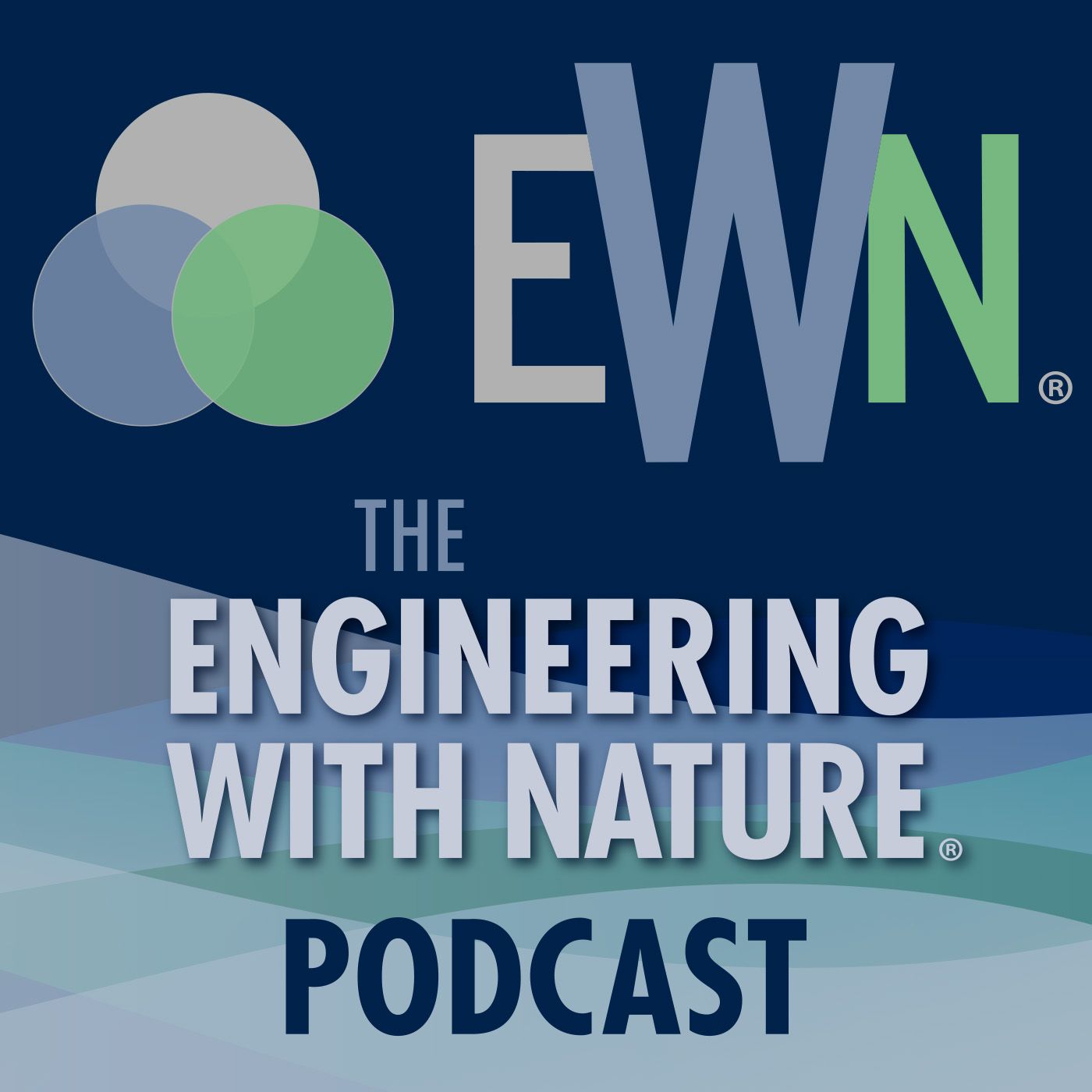Measuring What Matters
Description
How do we measure what’s most important to us? And how do we translate those values into decisions about infrastructure projects so that they can deliver a diverse set of economic, environmental, and social benefits? That’s the focus of our discussion in Season 5, Episode 4, of the Engineering With Nature® Podcast. Host Sarah Thorne and Todd Bridges, National Lead of the Engineering With Nature (EWN) Program, are pleased to welcome back to the podcast Justin Ehrenwerth, President and CEO of The Water Institute. In this episode, we’re talking about how to measure what matters with respect to natural infrastructure.
This episode is the third in a three-part series covering what Todd characterizes as the three-legged stool that supports the advancement of NBS. The first leg—identifying opportunities for making progress with NBS—was the subject of Season 5, Episode 2. The second leg—understanding the benefits and value of nature—was the subject of Season 5, Episode 3. The third leg—determining how to measure the value of NBS in infrastructure projects—is the focus of Episode 4.
This episode was recorded shortly after the national summit “Measuring What Matters” hosted by the Resilient America Program at the National Academies in Washington, DC, on November 30, 2022, in collaboration with the EWN Program and The Water Institute. Participants from a broad range of organizations came together to share their perspectives on the process and benefit of valuing nature.
Measuring and promoting nature-based solutions is a challenge. As Todd says, “How do we identify the full suite of benefits that nature-based solutions can bring to an infrastructure project? Getting nature up front in the process of planning and design involves elevating the benefits of nature, moving consideration of those benefits forward in the project development process. It’s critical to bring this understanding into the process of project design, accepting nature as a part of the solution.”
Addressing the challenge of measuring these benefits includes new policy research, including exploring the implications of policy alternatives that focus on what and how measurement of benefits is being incorporated into the planning process. Justin summarizes the desired outcome: “The bottom line is to make very clear in the evaluation process that a holistic appreciation of a series of benefits and costs—over and above economics—really has the opportunity to transform. And we’ve got great science to support that transformation, and momentum. If we harness all this interest and enthusiasm, we will see some big changes in the next 18–24 months.”
Todd adds, “How you define what is a relevant value or benefit when you are developing a project informs very substantively what constitutes a solution within that project. So, what you recognize as a ‘benefit’ basically determines the outcome. That’s the reason why we’re doing all this. To produce better projects that last and that produce the array of benefits that our communities need and deserve. I am excited about what we can produce together.”
For more information and resource links, please visit the EWN Podcast page on the EWN website at https://www.engineeringwithnature.org/
Related Links
Todd Bridges at LinkedIn Justin Ehrenwerth at LinkedIn
More Episodes
In Season 8, Episode 3, host Sarah Thorne and Amanda Tritinger, Deputy National Lead of the Engineering With Nature (EWN) Program, US Army Corps of Engineers (USACE), are joined by Brian Davis, Associate Professor of Landscape Architecture at the University of Virginia (UVA), and Cathy Johnson,...
Published 10/22/24
Published 10/22/24
In Season 8, Episode 2, host Sarah Thorne and Jeff King, National Lead of the Engineering With Nature (EWN) Program, USACE, welcome back Dr. Christopher Lemon, a physician and Assistant Professor, Department of Emergency Medicine at Johns Hopkins Medicine; Faculty Codirector of Clinical Programs...
Published 10/08/24


